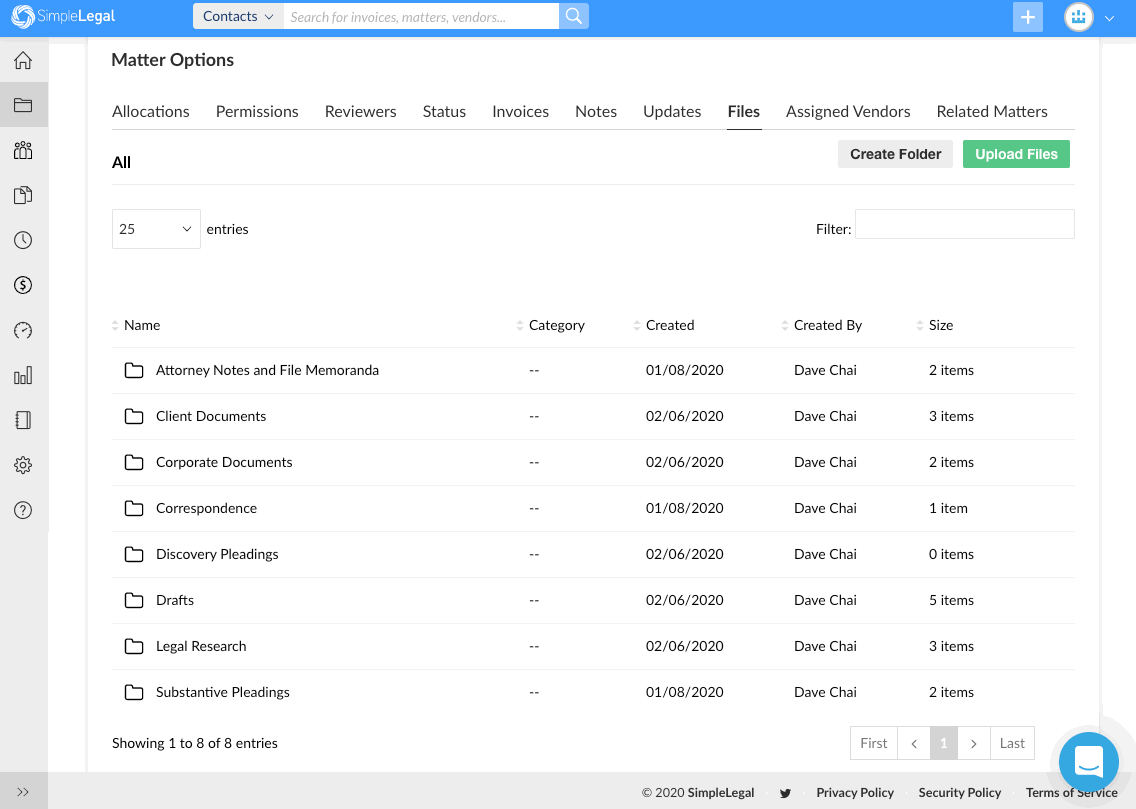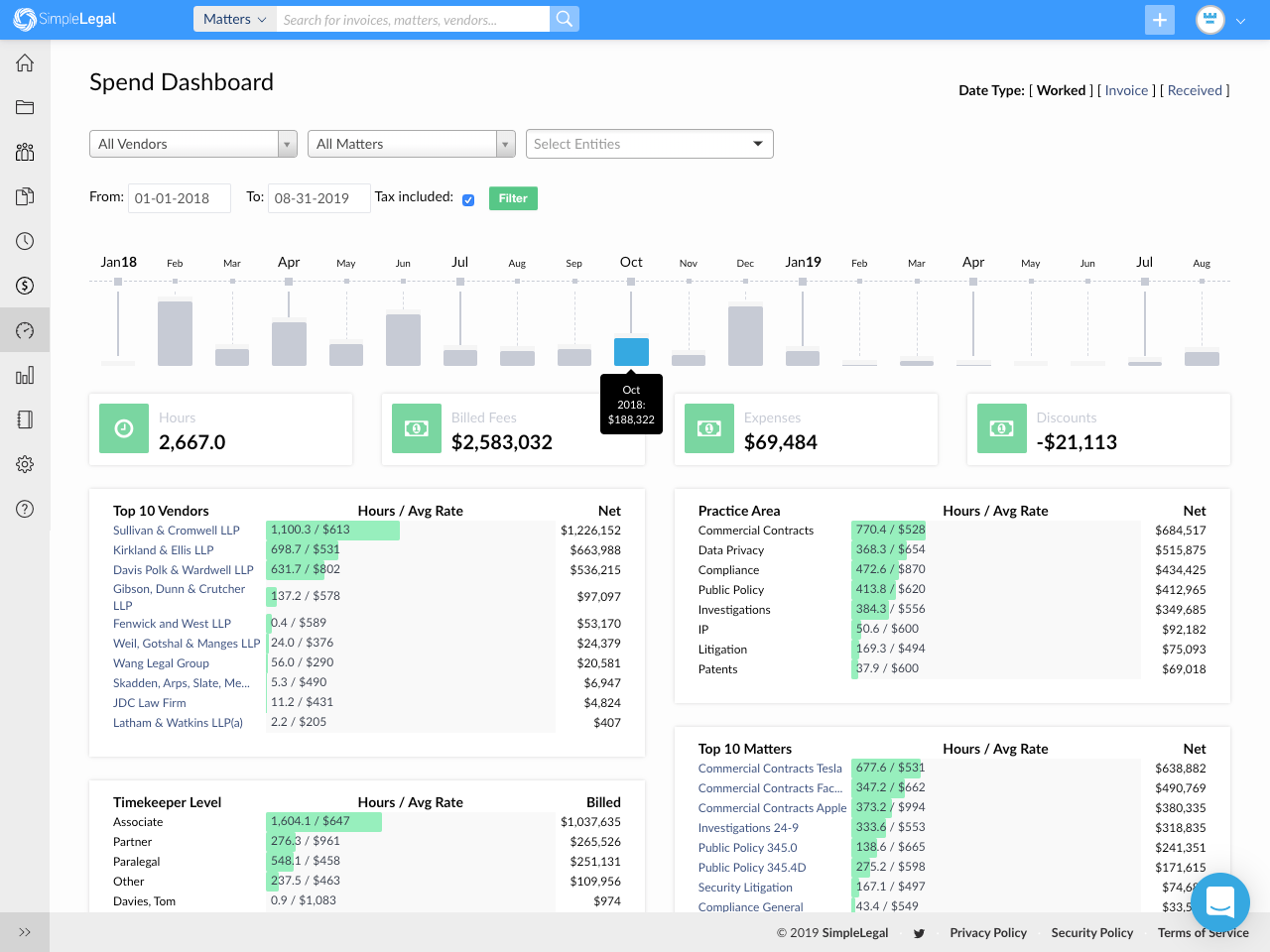How legal technology gets you out of admin work

“I love repetitive administrative work!” — said no one, ever.
And yet, office workers spend around 552 hours a year completing mundane administrative tasks.
You may think that your fragmented system involving multiple programs and manual processes works just fine, and you aren’t alone. Many legal departments hold onto legacy solutions because they’re worried about the time, effort, and money it will take to upgrade.
But the truth is those outdated systems are already wasting your time and money — 552 hours is nearly 14 full workweeks spent on basic admin duties.
You don’t have to take our word for it. Here’s how legal technology — tech adapted for the legal sector — takes the grunt work off your plate.
Automates Manual Work
Data gathering and entry are part of the job, but they don’t have to be handled manually. With the right legal enterprise software, you can automate time-consuming data gathering and reduce redundant data entry.
Your team can avoid complex spreadsheets and repetitive activities by automating processes like invoice approval workflows, legal billing guidelines enforcement, accruals collection, and contract lifecycle management. With the extra time, employees can focus on high-value, expert-level work. Ninety-one percent of participants in a business automation study said automation allowed employees to focus on less mundane tasks.
The benefits of handing off mindless tasks to a tech solution are worth the cost of implementing that platform. When employees spend their time on more skills-based tasks, they are more engaged and satisfied with their jobs. Disengaged employees, on the other hand, are less productive and more likely to leave the company.
Streamlines Document Management
A single legal matter could involve thousands of documents. When you’re working across departments and collaborating with outside firms, document organization gets complicated pretty quickly. It may not seem like a big deal to spend five minutes looking for a file, but it adds up. A McKinsey survey revealed that employees spend nearly 20% of the workweek — about eight hours — searching for and gathering information.
And that interruption costs you more than the time you spend digging around for information. Only 55% of work is resumed immediately after an interruption. If people don’t return to the original task right away, it takes an average of 25 minutes to refocus.
Document management systems prevent these disruptions by organizing documents in a logical way. Legal tech takes it a step further by categorizing documents by matter and linking related documents together. For example, an IP management matter may have hundreds of patent prosecution documents, filings, and notes associated with it. With a platform designed for legal teams, you can associate each file with the main matter.
SimpleLegal integrates with top document management solutions like Box and iManage, so you can keep your documents connected in a central location. Our platform also has a free built-in document management system (DMS) designed for legal departments.

Our DMS is specifically designed to help legal departments work more efficiently:
- Full-text search allows you to search all documents for keywords.
- Matter-level organization links related files together and applies associated access permissions.
- Version control stores all previous versions and tracks edits.
- Customizable labels and categories add an extra level of organization.
An Outlook add-on allows you to link emails and attachments to the associated matter right from your inbox.
Integrations Allow for Multitasking
Between emails, invoices, case files, and legal research, you probably hop in and out of several tools throughout the day. Task switching — even if it takes one-tenth of a second — can add up to a 40% loss in productivity over the course of a day. With integrations, you can reclaim that time by eliminating the need to switch between applications.
Integrations also reduce repeat data entry by sending data to multiple applications all at once. This prevents data inaccuracies that you’ll have to manually fix later. Plus, you can connect your tools with other departments, such as finance and accounting, to minimize back-and-forth.
With SimpleLegal, you can take advantage of our pre-built integrations, such as Outlook for email, IPfolio for IP management, and Workday for human capital management, or configure your own through our API.
Simplifies Reporting with Data Collection and Monitoring
You can’t run an efficient legal department without reports, but the process of collecting data and putting it into a useful format can be labor-intensive.
Legal technology allows you to define the metrics you want to monitor and then tracks them for you. So, if you want to keep an eye on outside counsel spend, you can set up reports that automatically track and filter spend by vendor, practice area, and average hourly rate.

SimpleLegal harnesses the power of Tableau business intelligence to provide even deeper insights with graphs and charts. Less time parsing through rows of data in Excel means more time forecasting future budget and resource needs.
Level up Your Legal Department with Technology Made for Your Team
You wouldn’t accept an invoice from an outside firm if a first-year associate billed at a partner rate. So, why are you allowing your high-paid legal ops employees to waste time on menial administrative tasks?
Legal technology is designed to save you from boring, low-value tasks while also saving you money. Check out our savings calculator to see just how much you could shave off your legal spend by upgrading your tech.


